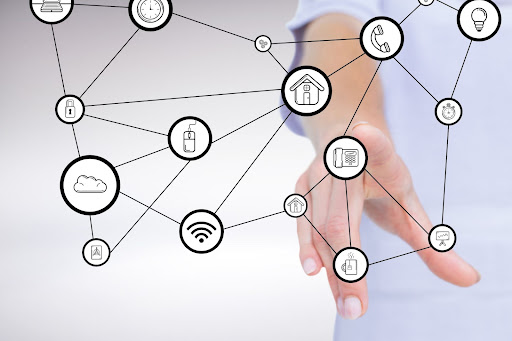From Classroom to IoT Lab: A Student's Guide to Getting Started with the Internet of Things
– By Debapriya Chatterjee
Hi there, future IoT whiz! So, you’ve heard all the buzz about the Internet of Things (IoT), and you’re itching to get started? Well, you’ve found the perfect guide. In this blog post, we’ll break down the essentials of the Internet of Things, and walk you through the journey from a curious student to a full-fledged IoT enthusiast.

Chapter 1: The Basics of IoT
The Internet of Things is all about connecting everyday objects to the internet so they can communicate and share data with each other. Think smart thermostats, fitness trackers, and even connected toasters.
Chapter 2: Finding Your Way
Before you rush into the IoT lab, you need to understand a few things.
Networking: Learn the ropes of networking. Understand how devices talk to each other through the internet.
Hardware: Familiarize yourself with the hardware — sensors, actuators, microcontrollers — everything that makes IoT tick.
Chapter 3: Choosing Your IoT Platform
Arduino: Perfect for beginners. It’s open-source and has a vast community.
Raspberry Pi: Great for more advanced projects. It’s like a mini-computer that can do real wonders.
NodeMCU: If you’re on a tight budget, NodeMCU is your best bet.
Chapter 4: Sensors and Actuators
IoT is all about gathering data and taking action. Sensors collect data, and actuators make things happen. Here are a few common ones:
Temperature and Humidity Sensor: Measures the environment’s temperature and humidity.
Motion Sensor: Detects movement. Great for security applications.
LEDs and Motors: Actuators that can light up objects or move things.
Buy starter sensors here.
Chapter 5: Coding Your IoT Project
Now comes the fun part—coding! You’ll need to write code to make your IoT devices do exactly what you want. Here are the things you’ll need:
Programming Languages: Learn languages like Python, JavaScript, or C/C++ for your chosen platform.
IoT Libraries: Explore libraries specific to your platform. They make coding easier.
Online Resources: Use online tutorials and forums for guidance. There’s a wealth of knowledge out there!
Chapter 6: Data Management
IoT devices generate tons of data. Managing it is crucial. Get familiar with:
Databases: Learn about databases to store and retrieve data efficiently. Here are a few examples of both SQL and NoSQL databases:
- SQL Databases:
- MySQL: An open-source relational database management system known for its speed and reliability.
- PostgreSQL: Another open-source RDBMS favored for its extensibility and support for advanced data types.
- Microsoft SQL Server: A popular choice for Windows-based IoT applications, offering robust data management features.
- NoSQL Databases:
- MongoDB: A document-oriented NoSQL database that’s great for handling unstructured IoT data.
- Cassandra: A distributed NoSQL database designed for handling large amounts of data across multiple servers.
- Redis: An in-memory data structure store used for caching and real-time data processing in IoT applications.
Cloud Services: Explore cloud platforms like AWS, Azure, or Google Cloud for data management. Obtaining certifications is an excellent way to bootstrap your learning about these cloud platforms. These certifications provide a structured learning path, validate your expertise, and make you more marketable in the field. It’s recommended you start with the foundational certifications and then progress to more advanced courses as you gain experience with your chosen cloud platform.
Visit the official websites of the respective cloud providers to learn more:
- Amazon Web Services (AWS) Certification
- Microsoft Azure Certification
- Google Cloud Platform (GCP) Certification
Each cloud provider also offers comprehensive learning resources, including documentation, training, and labs to help you prepare for these certifications. Remember, real-world hands-on experience is equally important in addition to certification.

Chapter 7: Communication Protocols
Devices need to talk to each other, and they use protocols to do so. Get comfortable with:
MQTT (Message Queuing Telemetry Transport): A lightweight and widely-used publish-subscribe protocol known for its efficiency and low bandwidth consumption.
CoAP (Constrained Application Protocol): Designed for resource-constrained devices, CoAP is used for efficient communication between IoT devices.
HTTP/HTTPS (Hypertext Transfer Protocol/Secure): Familiar web protocols are often used for IoT devices to communicate with web servers or cloud platforms.
AMQP (Advanced Message Queuing Protocol): An open standard for message-oriented middleware, ideal for IoT applications that require reliable messaging.
Bluetooth: Bluetooth protocols, such as BLE (Bluetooth Low Energy), are used for short-range communication between IoT devices and smartphones or gateways.
Zigbee: A low-power wireless communication standard designed for short-range, low-data-rate, and reliable communication in IoT and home automation.
LoRaWAN (Long Range Wide Area Network): A low-power, long-range wireless protocol for IoT applications that requires long-distance connectivity.
NB-IoT (Narrowband IoT): A cellular IoT technology that uses narrowband radio frequencies to enable low-power and wide-area connectivity.
Sigfox: A low-power wide-area network (LPWAN) technology that provides long-range connectivity to IoT devices with minimal energy consumption.
Wi-Fi: Standard Wi-Fi protocols are used for high-bandwidth, local-area connectivity in IoT applications, particularly in smart homes.
These are just a few of the many communication protocols available for IoT. The choice of protocol depends on factors like the specific use case, power requirements, range, and available hardware. IoT systems often use a combination of these protocols to achieve various communication needs within a single deployment.
Chapter 8: Security Measures
You don’t want your IoT project to be vulnerable. Learn about:
Encryption: Keep your data secure with encryption.
Authentication: Ensure only authorized users can access your devices.
Chapter 9: Building Your IoT Project
Now, let’s put it all together and start building your first IoT project. Start small, like a weather station, and gradually work your way up.
Click here to explore some unique ideas.
Chapter 10: Testing and Troubleshooting
Your project might not work perfectly the first time. No worries! Learn to test and troubleshoot like a pro. Here are a few video tutorials explaining how to debug Raspberry PI, Arduino and NodeMCU (ESP32).
Chapter 11: Real-World Applications
IoT is everywhere! Explore real-world applications like:
Smart Home: Automate your home for convenience and energy savings.
Healthcare: Wearable IoT devices monitor your health in real-time.
Smart Agriculture: IoT helps farmers optimize crop yield.

Chapter 12: Join the IoT Community
Join IoT communities and meet like-minded enthusiasts. A few popular destinations on the internet for IoT enthusiasts are listed below:
Reddit
IoT Community
Industry IoT
Chapter 13: Keep Learning and Exploring
IoT is a fast-evolving field. Keep learning, stay curious, and who knows, you might create the next big IoT marvel!
Congratulations! You’ve gone from a classroom learner to an IoT pundit. Now, go out there, build cool stuff, and make the most of the Internet of Things!


